The Mysterious Land of Lanterns: Jan Constantine in Japan
Posted by Camille on 28th Apr 2013
#JaninJapan
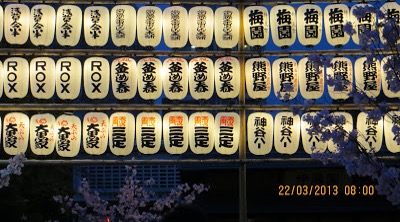
A few weeks ago, Jan and (her design assistant) Jo took a trip to Japan for several days to meet with buyers. The photographs below were all taken during their time there, and are accompanied by some of Jan’s comments on the trip and the people encountered along the way; it was, according to her, “a magical time” for them both. They were given an incredibly warm welcome everywhere they went, from the British Embassy to the shopping malls and restaurants, and Jan is already excited to be visiting again in October.

Jan: "This lovely baby, Nene, was fast asleep in the shopping mall, still clutching her biscuit."
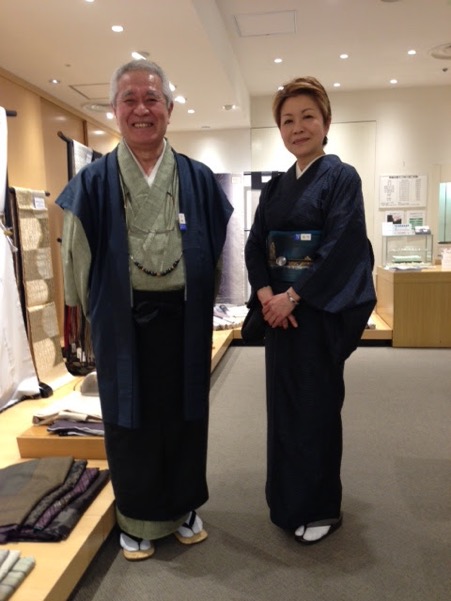
On the Japanese people she encountered, Jan stated that “The biggest impression I had while we were there was how overwhelmingly lovely the people were. They were so humble, shy, charming and helpful… in fact, they went out of their way to be helpful. If we ever got lost, they would actually take us to where we wanted to go. They are also very precise and orderly, in the nicest way.”
“They all seemed to really love the British, and they
say this is partly because of our similarities: we are both islands; we have
our Queen, and they have their Emperor; we are reserved people (most of us are,
anyway!).”
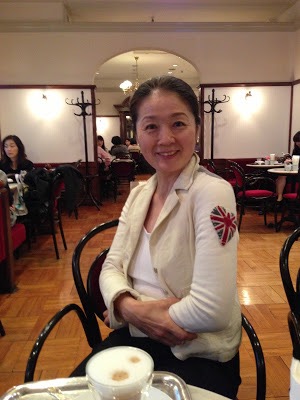
Jan: “This is Mayumi, our beautiful interpreter. She lived in Britain for several years as a garden designer and loves Britain – as you can tell from her sleeve!”
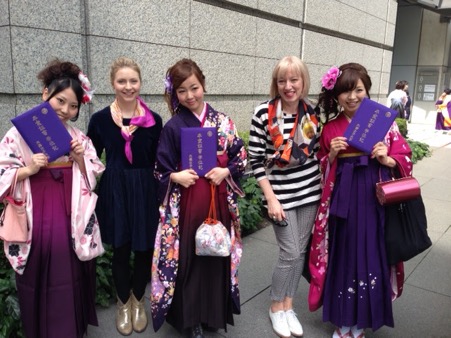
*Jan and Jo with beautiful graduates in Tokyo on graduation day (their graduation attire is much more interesting and colourful than our simple black robe).
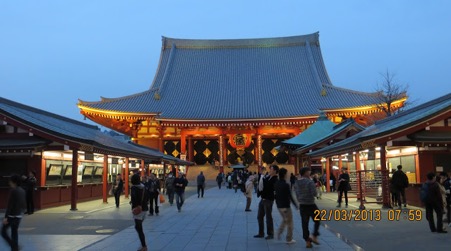
One of the most interesting aspects of the Japanese aesthetic is the concept of ‘wabi-sabi’. Founded on Buddhist ideas of transience and impermanence, this could be summarised as the belief that there is great beauty and perfection to be found in imperfection. Intrinsic to wabi-sabi are appreciation of natural objects and the natural world, modesty in style, irregularity and asymmetry; these are combined with sabi‘s connotations of beauty gained with age. In terms of aesthetics in manufacture, wabi-sabi might refer to the beautiful inconsistencies of certain production methods; the hand-embroidered cushions for which Jan Constantine has become known are all sewn individually, and all have their own tiny unique flaws and idiosyncrasies as a result. In this sense, they could certainly be said to exhibit the qualities of the Japanese aesthetic.
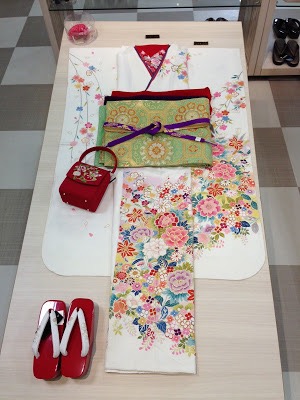
Jun'ichirō Tanizaki’s
extended essay, In Praise of Shadows*, discusses briefly the
Japanese appreciation of “the elegance of age” (p. 19), something that can be
easily likened to the British love of history and high
culture. Tanizaki writes that “we do not dislike everything that
shines, but we do prefer a pensive luster to a shallow brilliance, a murky
light that, whether in a stone or in an artefact, bespeaks a sheen of
antiquity” (19-20). Bright lights, video games and J-pop, though
important to (stereotypical) modern Japanese culture, do not epitomise the
ideals at its heart any more than fish and chips, the Grand National and
Britpop epitomise the oldest values of the British: the real heart of Japanese
culture is a love of the natural order and a patina of quiet dignity on all
aspects of life.
Kimono from Jan and Jo’s retail tour in Ginza, Tokyo.
The following is a haiku penned by Jack Kerouac (not a British writer, but nonetheless a great example of a meeting of Eastern and Western culture). Again, the transience and imperfection of wabi-sabi is in evidence here:
“Snap your finger stop the world – rain falls harder.”
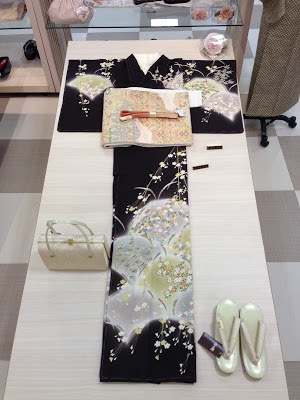
Jan loved this stylishly understated black kimono.
Jan Constantine’s products come bearing the tagline “hand-embroidered heirlooms of the future”. It is easy to understand how this might also relate to the Japanese love of antiquity and tradition. All in all, the British and Japanese concepts of vintage heirlooms and wabi-sabi are quite similar, in their modern meaning.All of these ideas go some way toward explaining the subdued grace of the Japanese artisan. We British will always adore our cloisters, cathedrals and the smell of cold stone – much like the Japanese, “we love the colours and the sheen that call to mind the past that made them” (Tanizaki, 20).
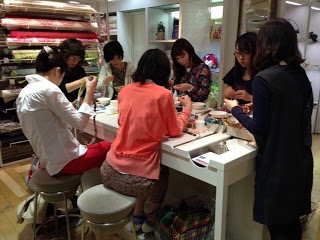
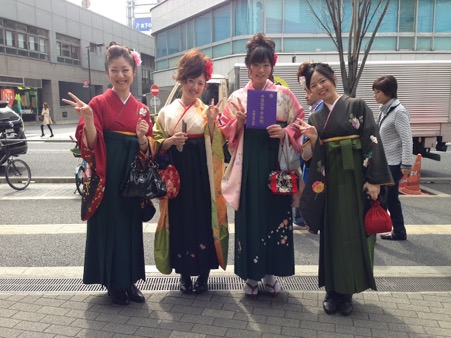
More happy graduates.
Jan found her visit to Japan absolutely fascinating – as should be clear from her comments on the visit! – and compared the experience to her first visit to New York in her early twenties. She was so excited that jet lag didn’t affect her in the slightest, though she found it difficult to go to bed (never mind go to sleep!)
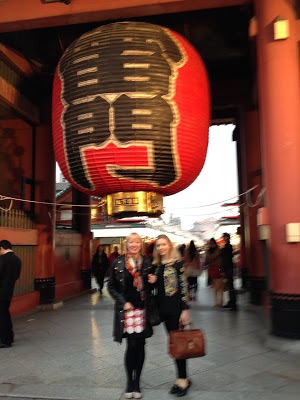
Next week, Jan Constantine’s agents will be showing her products at Hotel Okura in Tokyo in an event lasting for at least five days.
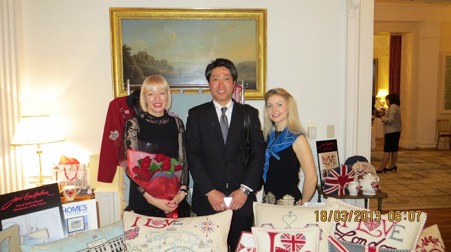
*Jun'ichirō Tanizaki, In Praise of Shadows (Vintage,
London, 2001; English translation first published by Leete's Island Books, Inc.
1977; Japanese original published 1933)
.

